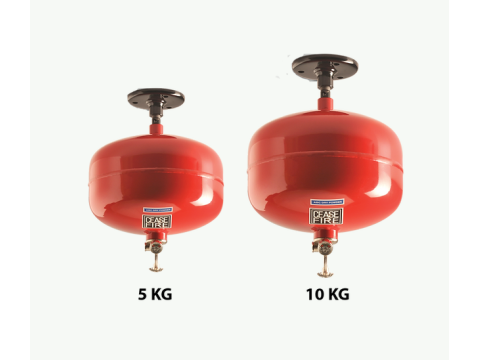What Is Powder Fire Suppression?
Powder fire suppression is an essential component of fire safety, designed for areas where water or foam-based extinguishing agents may be ineffective or harmful. These systems are particularly suited for environments with:
- Chemical production facilities.
- High-voltage electrical equipment.
- Storage of flammable liquids.
- Cultural or high-value assets where water may cause significant damage.
Advantages of Powder Fire Suppression
- Cost-Effective: Powder-based systems are among the most affordable in fire suppression.
- Ease of Installation: Modular systems are simple to install and maintain.
- Versatility: Effective against Class A, B, and C fires, including metal and chemical fires.
- No Hermetic Seal Needed: Unlike gas systems, powder systems do not require sealed spaces.
- Wide Temperature Range: Operates efficiently from -50°C to +50°C, ideal for unheated facilities.
Limitations
- Residual Cleanup: Extinguishing powder must be removed quickly to avoid damage to sensitive equipment.
- Poor Performance on Smoldering Fires: Ineffective for deep-seated fires like smoldering sawdust.
- Health Risks: Powder is toxic and requires precautions for human safety during and after activation.
Types of Powder Fire Suppression Systems
Centralized Systems
- Deliver powder from a central reservoir.
- Challenging to implement due to complex piping networks.
Modular Systems
- Independent units containing both the extinguishing powder and pressurized gas.
- Easy to install and widely used in automated fire suppression systems.
Powder Distribution Methods
- Volumetric: Distributes powder throughout the entire space.
- Surface: Targets walls, floors, and ceilings.
- Localized: Directly protects specific equipment or objects.
Key Components of Modular Systems
- Powder Storage: Tanks or modules containing extinguishing powder.
- Gas Generation: Either pre-charged gas or gas generated upon activation.
- Control Panel: Activates the system based on signals from multiple fire detectors.
- Dispersion Mechanism: Ensures even distribution of the extinguishing agent.
Popular Powder Modules
Burán
- Spherical design with flanges for easy installation.
- Supports both autonomous and integrated system operations.
- Available in various capacities (0.8–50 kg).
Tungus
- Uses an electronic activation system for precision.
- No internal pressure during standby, enhancing longevity.
- Contains anti-caking additives for optimal powder flow.
Installation Guidelines
Project Design: A certified plan must account for the facility’s architecture, environmental conditions, and fire risk classification.
Placement: Modules must cover all high-risk zones, with paths for effective dispersion.
Integration: The system should connect to the building’s safety protocols, including:
- Fire alarms and evacuation alerts.
- Ventilation and smoke extraction controls.
- Access systems for emergency responders.
Testing and Commissioning: All components, including sensors and pyrotechnic devices, must undergo rigorous testing.
Safety Protocols
- Warning Systems: Install light and sound indicators like "Powder – Leave Area" signs inside protected zones.
- False Alarm Mitigation: Ensure systems only activate after confirmation from multiple detectors.
- Maintenance: Regularly clean sensors and conduct inspections to prevent malfunctions.
Applications
Powder fire suppression is ideal for:
- Industrial facilities handling flammable chemicals.
- Data centers and server rooms.
- Museums and libraries storing valuable artifacts.
- Oil and gas industry infrastructure.
Conclusion
Powder fire suppression systems offer reliable, cost-effective protection for various environments. Modular systems, like "Burán" and "Tungus," provide tailored solutions for specific needs. Proper design, installation, and maintenance are essential for ensuring safety and minimizing risks during fire emergencies.

